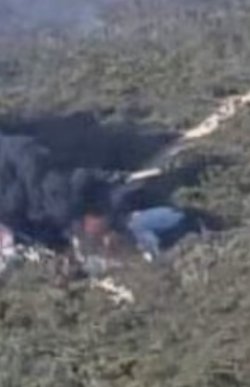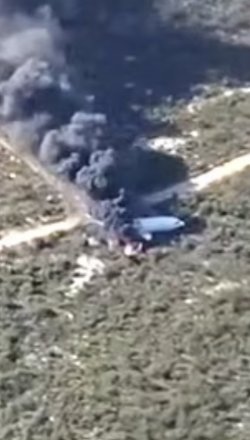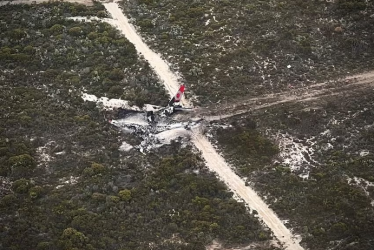Yes, there’s substantial risk to this sort of flying, and there will be accidents. On the other hand, it’s a service that is purchased by our experts on firefighting, and they seem to consider it worthwhile. I’d expect that the risks taken by these crews are an order of magnitude less than experienced by the fire crews on the ground.
I don’t think they did anything of the sort. They just happened to accidentally run into the ground. The outcome was purely luck.
I think that we have some interesting underlying things, unrelated to the physics of keeping that bird in the air, at play in this whole incident.
A lot of people seem to have made the assumption that they were dealing with, for want of a better term, a 'classic' SE Australian-type wildfire (ie. a massive leaping-ahead crown fire in a 50-70m tall
E. regnans forest, with its associated 'firestorm' (this assumption comes through in some of the Blancolirio channel's comments).
That was not the case - it was a fire in heathland vegetation - albeit highly flammable and maybe with a (relatively) high fuel load. And the weather was not a screaming windstorm. It could not possibly be a raging crown fire shooting embers kilometres ahead
a la Black Saturday. That is not to say the fire was not causing significant atmospheric disturbance affecting aviation.
But that heathland vegetation is a World Heritage-listed biodiversity hotspot. Take it from me, the flora is stunning. But it has also evolved in a fire-regime - as has most of Australia's natural vegetation. Fire (actually very often the smoke) is a critical requirement for successful seed germination and regeneration.
It is at this point that the clash between biology and the needs of society to stop fire messing with us comes into conflict. It also potentially sets biological 'experts' who want nature to 'work' both with and against fire and emergency 'experts' whose raison d'etre is 'stopping fires'.
On one hand, and given that it's an uninhabited area, one could 'let it rip' - but when the 'biologically pristine' area is limited to a small fraction of its original size, and may be (temporarily) wiped out in one hit, rather than in mosaic, is that acceptable?
Hence the 'controlled burn' strategy that's been long-established in WA (since the 1961 Dwellingup bushfire catastrophe) - but which struggles to keep up with the need. It's an attempt to create a fuel-load mosaic where bushfires can not easily initiate or burn themselves out, yet maintain regenerative function.
On the face of it, to some people sending in a large jet aircraft to 'bomb' a heathland fire would seem like overkill. But it's a 'bushfire', so to others, it must be bombed into submission before it consumes our (in this case distant) properties. (On the 'fatal' run they were 'bombing' the perimeter progressing into the park - away from the closest human habitation).
The fire control people need to be seen to be doing something - and maybe, these days, the more 'high-tech', the better...
But the context is important and I think a lot of that has been lost as this aviation 'firestorm', as it were, has spread around the world.
It's a controversial issue and long has been so in the SW of WA (the far inland regions like the Kimberley, Goldfields and Pilbara are a whole different story). Like many issues in society, there is no simple answer and I certainly don't presume to have one.
So, back to the crash. I just can't imagine that their luck would have been as high had they been tackling a massive crown fire in towering eucalypt forest in hilly and rocky terrain instead of a comparatively moderate fire in heathland on flat and sandy terrain.



















